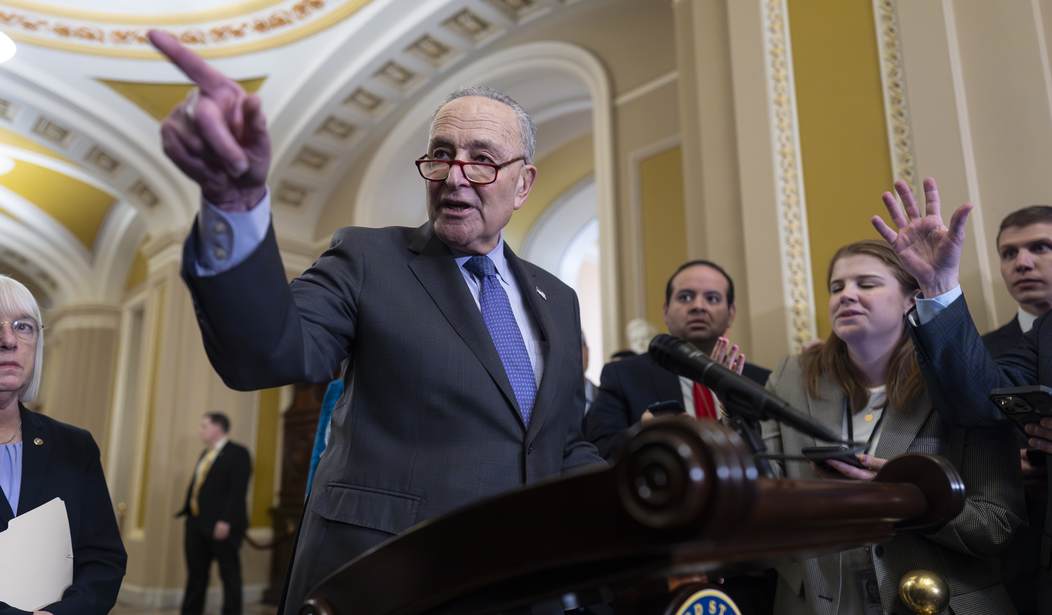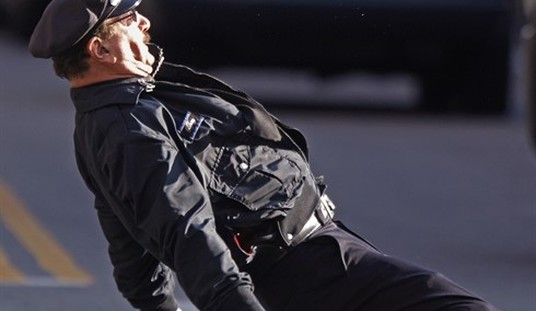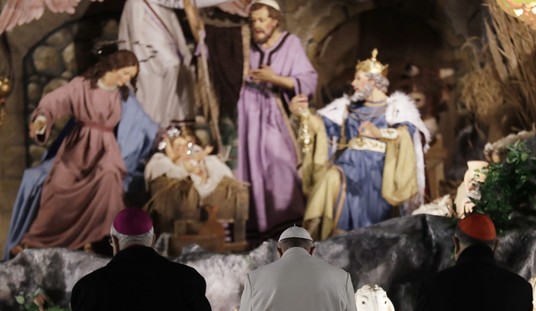Well, it happened. What the Democrats have been threatening — to shut down the government — has come about. As of midnight on October 1, our government is shut down for the first time since December 2018.
And it didn’t have to happen. Republicans had already pushed through a clean continuing resolution to keep funding going through November, when a new budget, the first in more than a quarter century, is anticipated to be complete. On September 18, with less than two weeks before the last CR expired, Democrats tossed that aside and vomited up their own competing bill. It was loaded with enough poison pills that no Republican could vote for it without political suicide, and no president, certainly not Donald Trump, would ever sign it. To make matters worse, they introduced it so late there wasn’t even time to debate.
This isn’t governing. This is cornering. A stunt designed not to keep the lights on, but to turn them off for maximum drama.
Boorstin and the Pseudoevent
This reminds me of Daniel Boorstin’s now-obscure 1961 book The Image: A Guide to Pseudo-events in America. Boorstin coined the word pseudoevent to describe happenings that are not spontaneous or organic but carefully manufactured for publicity. A pseudoevent is:
- Planned, not accidental: called into being by press releases, media invites, or strategic timing.
- Created primarily to be reported: its very purpose is news coverage, not policy outcome.
- Dramatic but thin: designed to be simple, memorable, and emotional.
- Self-fulfilling: it becomes important not because of what it changes in reality, but because of the attention it generates.
Boorstin never intended his book as a how-to guide, but that is exactly what American politics has turned it into. Reading him now, more than sixty years later, it is striking how much of modern political life seems to confirm his warning: a culture where the appearance of action matters more than the substance of it.
What Is a Pseudoevent?
A pseudoevent is not a lie, but neither is it reality in the way we normally think of it. It is something called into being not to solve a problem or address a crisis, but to be seen, replayed, and remembered. The staged photo-op, the “spontaneous” press conference planned weeks in advance, the made-for-TV hearing, the celebrity scandal timed to hit the headlines, the National-Whatever Day engineered for hashtags: these are all pseudoevents. They happen, yes, but their true importance lies in how they look on camera and how they are framed in memory.
And some of the most memorable pseudoevents of recent years prove just how sticky an image can be:
- Pelosi’s paper-rip (February 2020): tearing up Trump’s State of the Union speech on live television, a gesture designed to be replayed endlessly.
- Kamala Harris’s “space” video (October 2021): children hired as actors to “wonder” with her about the stars, packaged as authentic inspiration.
- Blue Origin NS-31 (April 2025): a suborbital flight promoted as an “all-female mission,” featuring Katy Perry, Gayle King, Lauren Sánchez, and others; staged as a space milestone but functionally a 10-minute amusement ride.
- Greta Thunberg’s “How dare you” speech (September 2019): a single emotional line that overshadowed the policy debates at the UN.
- Obama’s “beer summit” (July 2009): a Rose Garden meeting staged as reconciliation after a racial controversy, remembered for optics more than outcome.
These aren’t falsehoods. They happened. But they matter not because of what they change in the real world, but because of how they look. That is the power of a pseudoevent: the image outlives the substance.
The Purposes of Pseudoevents and Their Co-option by Propaganda
A pseudoevent is a tool, and like any tool, it can be wielded for many purposes. At its most basic, a pseudoevent captures attention, controls a message, simplifies a complex reality into a single image, and projects virtue or resolve without requiring the hard labor of actual change.
The purposes are clear:
- Attention capture: dominate the news cycle, however briefly.
- Message control: frame the issue on your own terms.
- Emotional manipulation: bypass reason with a symbolic gesture.
- Virtue display: show the public you “care” or are “acting,” even if little is accomplished.
- Narrative reinforcement: feed a storyline your audience already expects to hear.
Because pseudoevents do these things so well, propagandists quickly recognize their power. Traditional propaganda is a long game — the posters, slogans, and broadcasts meant to shape belief and loyalty. Pseudoevents offer something different: a short, sharp drama that can be dropped into that larger stream of persuasion.
In practice, this means propaganda no longer needs only words or ideology. It can rely on images. A staged act, captured and replayed, can do more than a thousand speeches. A ripped piece of paper, a tearful child, a symbolic toast: these moments become the raw material of propaganda. In other words, pseudoevents are the delivery system for the narratives propagandists want to build.
The Shutdown as Pseudoevent
All of this brings us back to the present moment. The government shutdown is real. Employees are furloughed or fired, paychecks are withheld, offices are shuttered, services are frozen. No one can deny the concrete damage. But the catalyst for this shutdown is a pseudoevent: a last-minute, poison-pill bill introduced not to fund the government, but to stage a confrontation.
The timing ensures there is no meaningful debate. The contents guarantee rejection. And the messaging, hammering endlessly on “you will lose your healthcare!”, supplies the emotional hook. This is not governance. It is performance, a made-for-television showdown scripted to look like Republicans have forced a shutdown rather than Democrats having spiked a clean resolution.
The Democrats are trying to bury the substance — the nearly finished budget, the Republican willingness for a clean CR — under their theatrics.
The consequences are real, but the spark is staged.
When Spectacle Replaces Substance
Boorstin warns that a culture addicted to pseudoevents loses the ability to tell the difference between performance and reality. That is where we are now. The shutdown shows it clearly. Our leaders would rather stage a spectacle than finish the budget. They know the headlines will linger long after the truth is forgotten. The danger is that government itself is becoming little more than theater. Not the hard, messy work of compromise, but a series of scripted images meant to keep the cameras rolling. When spectacle replaces substance, it is not just politics that suffers. It is the country.









